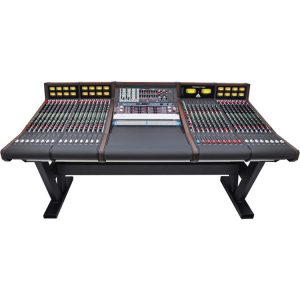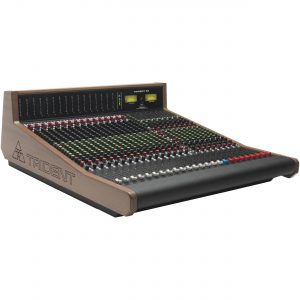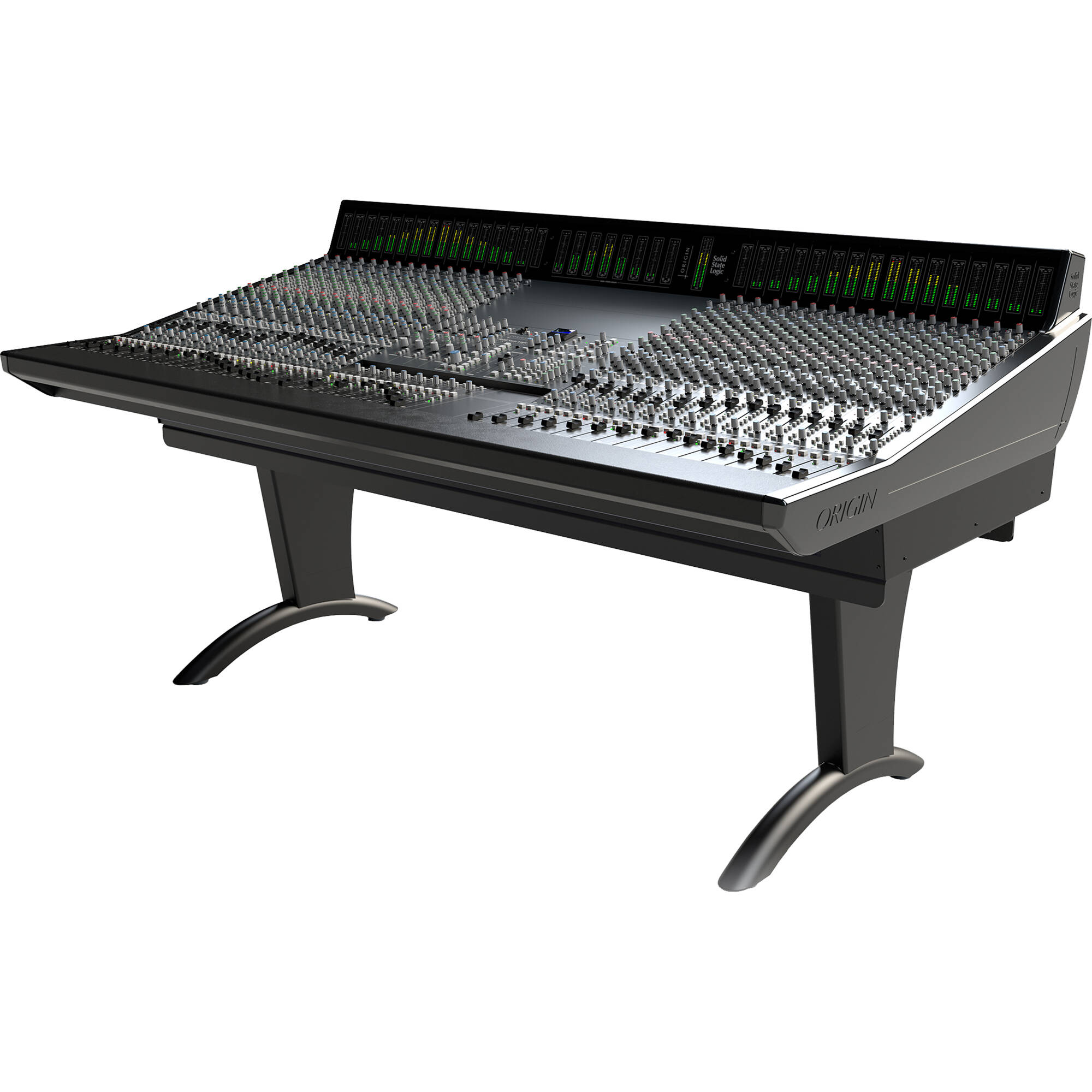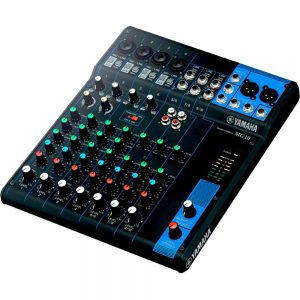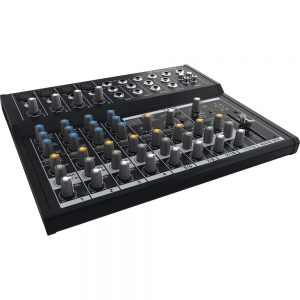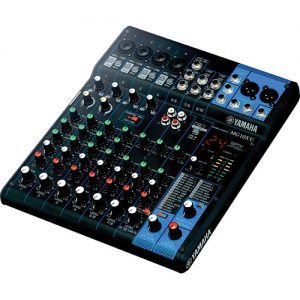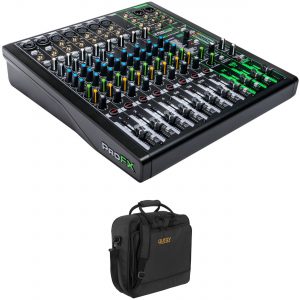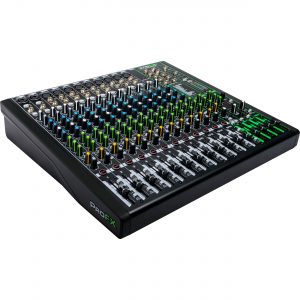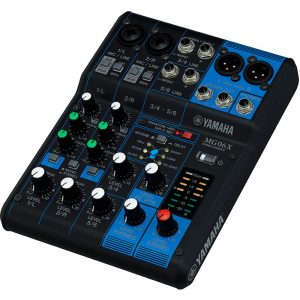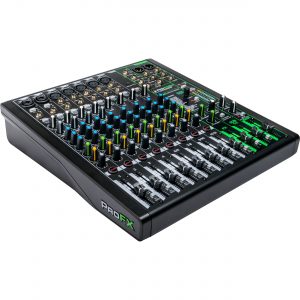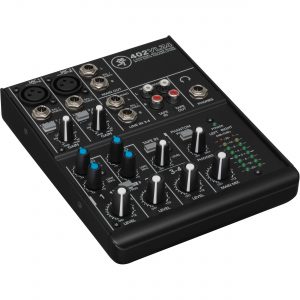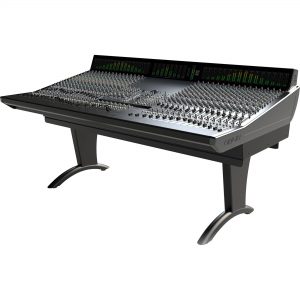Solid State Logic Origin Overview1Description2Master Section3New Innovations and Classic Designs4Comprehensive Channel StripLearn How to Record Audio for Video and FilmRead MoreThis is our ORIGIN.If you’ve always wanted an SSL Console in your professional studio but balked at the operational costs, the Solid State Logic ORIGIN is the desk for you. This 32-channel console provides the layout, vibe, glue, sonics, and flavor of a classic SSL desk¡ªbut that’s not all: the ORIGIN has powerful, versatile, and cost-saving features designed to make professional hybrid mixing an absolute pleasure.Need the most accurate, transparent sound for one project, but warmth and saturation for another? PureDrive preamps will give you both on a per-channel switchable basis. Concerned about your monthly electric bill? Don’t be: the ORIGIN automatically detects when you’re idle, going into a power-saving mode to run at 40W rather than 900W. Comprehensive routing, 4K EQs on each channel, and a 2-fader per channel setup are all on hand. With the ORIGIN in your studio, you can achieve high-quality hybrid mixes with the aplomb for which SSL is world renowned.Master SectionAll the Works at Your FingertipsThe Master Control section is the heart of ORIGIN, designed with all the easily accessible features and tools needed to ensure a fast and creative workflow. Taking sustainability, ergonomics, modern gain-staging, and communication requirements into consideration, ORIGIN offers a reassuringly familiar Master Control feature set, with some ahead-of-the-curve functionality.Classic Bus CompressorThe SSL Bus Compressor is a fundamental feature of all SSL Master Control tiles, and it sees a number of enhancements in ORIGIN. You’ll find extra compression ratios over previous versions, an insert/return path for the sidechain filter, and a built-in sidechain detector circuit as well. Whether you need punch or glue, this compressor will provide it.Bus Trim Masters and RoutingA central track-bus routing matrix features 16 trims for the track buses, each with a range of ¡À10 dB, and each with routing-assign switches for each bus.Auto SleepStartup costs are one thing, but operational costs are quite another. For all those who run a studio, this is a big deal: an Auto Sleep mode automatically recognizes prolonged periods of inactivity, and puts the console into stand-by, reducing power consumption, and making ORIGIN significantly more efficient than legacy SSL consoles.Solo Master SectionComprehensive Solo controls provide choice of Solo-In-Front with Mix balance, Solo-In-Place for Large, Small & Group faders, and PFL options. Solo Level, Solo Clear, and a Red Light Switch complete the available options.Mix Bus FaderThe mix bus features a high-quality 100mm fader, with a fully balanced, switched insert for external bus processing.MonitoringThe monitoring section offers independent trims for alternate monitors 1 and 2, as well as a variable DIM level, a Mono switch, left and right mutes, and an Invert Polarity switch for the left channel. You can select your monitor source from the main mix, three external stereo sources, or a front panel stereo 3.5mm jack input, with a Sum switch allowing selected sources to be listened to simultaneously.ReturnsFour stereo return inputs enable ORIGIN to route to mix and track buses with level-controlled feeds to stereo foldback outputs A and B.New Innovations and Classic DesignsNew Mix Bus and Amp ArchitectureA new mix bus and mix amp architecture delivers an amazingly low noise floor and a wide range of headroom, along with SSL’s latest summing bus technology, which retains the classic SSL sound, all while bringing the breadth and space to mixes that engineers and producers love from analog.Built for Recording, Mixing, and SummingThe ORIGIN’s inline structure provides the twin paths needed for recording to and summing from a workstation, doing so with simple path routing indication and fast push-switch access to alter the signal flow.
Furthermore, the balanced insert point on each fader path is perfect for mixing duties, such as inserting an SSL Sigma into the path, allowing you to automate levels controlled directly from the DAW.PureDrive Mic PresSolid State Logic has completely redesigned their mic pres for the ORIGIN. The console offers a preamplifier design that allows you to switch between the clarity and purity of previous SSL mic pres, or a sound with more drive, character, and warmth.SSL has called this circuitry PureDrive. It’s a transistor mic preamp design based around modern FET components. Pure mode gives you an ultraclean, ultralow-noise, naturalistic response. Hit the switch, however, and drive mode is engaged. Now you’re adding gain-dependent nonlinear harmonic saturation.In short, whether you’re looking for something clean or something characterful, ORIGIN has you covered.E-Series 242 EQThe E-Series 242 EQ was arguably the most popular EQ from the SL 4000 series console range, so SSL brought it back for the ORIGIN. On every channel, you’ll find the iconic E-series four-band parametric EQ. These provide variable cut and boosts per band, as well as HF and LF bell/shelf switches, and a sweepable HPF on every channel. You’ll feel that unmistakable 242 growl and deep low end on each of the 32 channels.Customizable Center SectionWhile ORIGIN offers a familiar look to its Center section, the design makes it adaptable for many different production scenarios. The 19″ rack-based modular center section allows the console to adapt to different control priorities, and also adds space for custom outboard processing.For example, the addition of a central 500 Series rack provides a way to accommodate flexible analog processing from a number of manufacturers. Or, you can move the center section to allow for workstation controllers to be more centrally located: even the 3 RU center meter panel can be moved, so that your workstation monitor can move closer to you without obscuring the main meters.Comprehensive Channel StripOverviewIf the Center section is at the heart of the ORIGIN, then each of the channel strips is a vital vein, pumping to the heart of the system with all the vitality you’ve come to express from Solid State Logic. What follows is a detailed description of everything you can find in each of the 32 channels.Large Fader / Small Fader DesignThe ORIGIN offers both a small fader and a large fader on each channel for extensive routing and gainstaging possibilities. Each fader has a 0 dB switch for automatic unity placement¡ªakin to putting the fader to the Unity position¡ªas well as Insert Pre Switches, and direct, selectable paths to the mix bus.A Large Fader (LF) / Small Fader (SF) path indicator and a Flip switch let you use the drive circuit for mixdown through large faders if need be. The Pre-Fader selection and LF/SF path indicator / Flip switch allow for versatile path/source selection as well.Channel InputsThe channel inputs typically feed the Small Fader path for recording, offering a versatile and switchable mic/line preamp that has 70 dB of gain on tap, as well as 48V phantom power and polarity inversion.DriveUse the Drive switch to change the ultraclean linear preamp to one with gentle warmth from harmonic distortion and transient compression artifacts.Line-Level Monitor InputComplete with a Gain trim, the line-level monitor input typically feeds the Large Fader, and is used with discrete DAW feeds for analog summing or record-signal monitoring. However, the Path Flip switch allows the monitor input to feed the small fader instead.Channel Direct OutputThis provides the cleanest record path to the recorder, freeing track buses for more creative uses. It also provides a simple way to record post-fader paths to your DAW in order to print stems for different versions of the mix.2 Stereo Cue FeedsTwo Stereo Cue feeds (A and B), each with Level Controls and Pan Knobs, are on hand. Typically, these are sent pre large fader to provide fold back mixes that follow the control room large fader monitor mix. However, the SF switch sources the feed from the Small Fader, and a post fader feed option allows you to use these feeds as additional stereo FX sends.Four Mono Aux BusesFour mono aux buses with level controls provide a simple way to feed mixes to external effects or create mono parallel mixes for additional bus needs. You can also source the Aux from the Small Fader path, or create mono foldback sends by taking a Pre Fader feed.Easy Yet Sophisticated RoutingA bus channel routing switch handles your routing. A blue LED indicates if channel routed to a bus. Follow path pan allows stereo odd/even bus panning.Overload LEDs for Visual IndicationOverload LED illuminates when large or small fader paths are within 3 dB of either path’s clipping point.?In the BoxSolid State Logic ORIGIN 32-Channel Analog Console for Hybrid Production EnvironmentsLimited 1-Year WarrantyUser Manual4.2 MBTable of ContentsDescriptionMaster SectionNew Innovations and Classic DesignsComprehensive Channel StripSolid State Logic Origin SpecsChannel Input Microphone/Line AmpGainMic Amp Gain Variable from +5 to +70 dB (Depending on Potentiometer Tolerances)
Line Amp Gain Variable from -10 to +55 dB (Depending on Potentiometer Tolerances)Input Impedance1.4 KilohmsMicrophone Max Input Level+21 dBu (1% THD)HeadroomOutput: >+26.5 dBu at Onset of clippingFrequency Response20 Hz to 20 kHz (+0/-0.2 dB, -3 dB High Rolloff Over 90 kHz)THD + Noise< 0.004% at 1 kHz (20 Hz to 20 kHz; -10 dBu Applied, +30 dB Gain at 1 kHz)
< 0.018% at 10 kHz (20 Hz to 40 kHz; -10 dBu Applied, +30 dB Gain at 10 kHz)CMRR> 57.5 dB 20 Hz to 20 kHz (-10 dBu applied, +30 dB Gain)EIN< -127.5 dBu (A-Weighted, Mic Amp 150-Ohm Termination, Maximum Gain)Monitor Input Line Input AmpGain-20 dB to +20 dB, Variable, Depending on Potentiometer TolerancesInput Impedance10 KilohmsLine Max Input Level> +28 dBu Before Clipping (1% THD)HeadroomOutput Headroom: > +27.5dBu at Onset of ClippingFrequency Response20 Hz to 20 kHz (+0/-0.03 dB, -3 dB High Rolloff above 156 kHz)THD + Noise< 0.0003% at 1 kHz (20 Hz to 20 kHz; -10 dBu Applied, +20 dB Gain at 1 kHz)
< <0.0009% at 10 kHz (20 Hz to 40 kHz; -10 dBu Applied, +20 dB Gain at 10 kHz)CMRR> 65 dB 20 Hz to 20 kHzEIN< -104 dBu (A-Weighted, Mic Amp 150-Ohm Termination, Maximum Gain)EqualizerAudio Test ConditionsSignal Applied Line Input Mono, Routed by Shortest Path, All Controls Flat or Unity, Pans Set Full Left/RightAudio Test ConditionsSignal Applied to Line Input, Measured at Channel Insert Send, EQ Switched in with EQ Controls Centered in Shelf Mode Applied to Line Input and Measured at the Channel Insert SendHeadroomOutput: >+26.5 dBu at Onset of ClippingTHD + Noise< 0.0008% at 1 kHz (Filter 20 Hz to 20 kHz, +20 dB Gain at 1 kHz)
< <0.0009% at 10 kHz (Filter 20 Hz to 40 kHz; +20 dB Gain at 10 kHz)Noise< -80 dBuOverall Channel Signal ChainHeadroom> 24 dBu into 600 Ohms at Onset of Clipping
> 26.5 dB into 10 Kilohms at Onset of ClippingTHD + N< 0.0008% at 1 kHz (Filter 20 Hz to 20 kHz, +20 dB Gain at 1 kHz)
< <0.0008% at 10 kHz (Filter 20 Hz to 40 kHz; +20 dB Gain at 10 kHz)Frequency ResponseTrack Buses: 20 Hz to 20 kHz (+0/-0.03 dB, -3 dB High Rolloff above 70 kHz)
Main Mix Buses: 20 Hz to 20 kHz (+0/-0.03 dB, -3 dB High Rolloff above 70 kHz)
Auxiliary Buses: 20 Hz to 20 kHz (+0/-0.03 dB, -3 dB High Rolloff above 70 kHz)PotentiometerPot Centre Detent Accuracy: ¡À1 dB, Typically < 0.5 dBSystem CrosstalkAudio Test ConditionsSignal Applied Line Input Mono, Routed by Shortest Path, All Controls Flat or Unity, Pans Set Full Left/RightMutingChannel Muting: < -100 dB (20 Hz to 20 kHz)Channel Fader KillMaximum Fader Attenuation: < -89 dB (20 Hz to 20 kHz)PanPan Pot Isolation: <-55 dB (20 Hz to 20 kHz)Main MixRouting Channel to Main Mix < -94 dB (20 Hz to 20 kHz)Routing Channel to Track BussesChannel Routed to All Busses Apart from One Under Test: <-64 dB (20 Hz to 20 kHz)
Channel Not Routed: <-113 dB (20 Hz to 20 kHz)Mic Input<-95 dB (-50 dBu Applied to Mic Input at Maximum Gain, Measured at Direct Output, Monitor Path Selected)Noise CharacteristicsAudio Test ConditionsMeasured at Main Mix Outputs, Channels Routed as Required with Pans / Balance controls centered, using Line Input with Termination; All controls flat, out or Unity, Channel and Master Faders Calibrated for 0 dBNoiseLine to Mix (Pan Center):
1 Channel Routed: < -93 dBu
16 Channels Routed: < -85 dBu
24 Channels Routed: < -83 dBu
32 Channels Routed: < -79 dBuGeneralPower ConsumptionOperating: Typically < 900 W, 1200 W Max
Standby/Sleep: Typically < 40 WOperating Temperature34 to 86 ¡ãF / 1 to 30 ¡ãCStorage Temperature-4 to 122 ¡ãF / -20 to 50 ¡ãCDimensions38.7 x 73.6 x 42.5" / 98.4 x 186.9 x 107.9 cm (Overall, Including Optional Legs)Weight330.0 lb / 150.0 kg (Including Optional Legs)Solid State Logic Origin
Contact UNCUCO WhatsApp: +8615989288128
Email:service@uncuco.com
